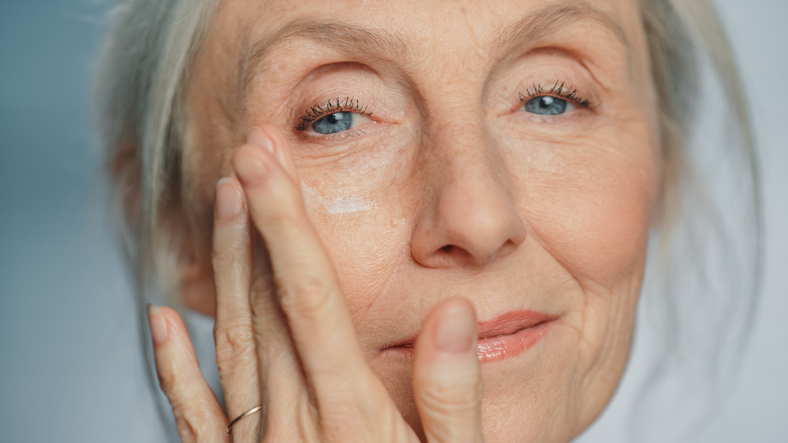An anti-aging ingredient recognized by dermatologists, retinol has a solid reputation; here’s what you need to know
By Mariève Inoue
Our experts:
- Dr. Jenny Liu, dermatologist in the University of Minnesota’s Department of Medicine.
- Nathalie Pelletier, director of research and development and scientific affairs for the skin-care brand Functionalab.
A form of vitamin A, retinol is “the best-known anti-aging molecule and the one most studied by the medical community,” says Nathalie Pelletier, director of research and development and scientific affairs for the skin-care brand Functionalab. A key skin-care ingredient for decades, retinol was first used to treat acne before its abilities to correct hyperpigmentation and reduce the appearance of wrinkles and fine lines were discovered. The ingredient also improves the skin’s texture and stimulates the production of collagen.
“People with mature skin can see an improvement in the appearance of fine lines, wrinkles, and uneven skin tone associated with sun damage,” says Dr. Jenny Liu, a dermatologist in the University of Minnesota’s Department of Medicine.
How Much Is Too Much?
While retinol offers definite results, it has, like most vitamin A derivatives, its downsides. It can dry out and irritate the skin, effects that can be a problem for some people.
Pelletier’s recommendation for limiting these undesirable effects is to proceed slowly. “It’s better to start with a low dose, that is, a product with a concentration of between 0.1% and 0.5%,” she says. “Start by applying it once every three nights; after a week, if all is well, apply it every second night, and so on, until you can use it every day.”
Once the bottle is empty, you can decide whether to switch to a product with a higher concentration, introducing that gradually as well. However, Liu says, “You can’t judge a product’s effectiveness based only on the percentage of retinol it contains.” Some formulas combine a higher concentration of retinol with anti-inflammatory or moisturizing ingredients to improve skin comfort and reduce skin reactions.
Another, more powerful version of vitamin A is available only with a doctor’s prescription. This is retinoic acid (also known as tretinoin), sold under the brand name Retin-A; this gives excellent results but can have side effects as well.
Still, experts agree that retinol sold without a prescription can counter signs of aging. “Some say that retinol is 10 times less powerful than retinoic acid,” Liu says, “but some studies have shown that it may be as effective as 0.05% tretinoin in mitigating photo-aging while causing a lot less irritation.”
How to Use It
To add retinol to your skin-care routine while minimizing the risks of irritation, Liu says the ideal approach is to “apply the product at night on clean skin and then apply a rich moisturizing cream on top.” You can also add a hydrating serum to your routine—look for these ingredients on the label: hyaluronic acid, squalane, glycerine, or ceramides.
“If you notice redness and more than a little temporary tightness, ease up on your use of the product or stop completely for two weeks before trying again to incorporate it very gradually,” Pelletier advises. If your skin still doesn’t respond well to it, try other ingredients, such as bakuchiol and retinal, or other molecules with benefits similar to retinol’s but without its unpleasant side effects. For example, vitamin C adds skin radiance and helps with dark spots, while peptides minimize the appearance of wrinkles and fine lines.
Remember the Sun!
Protecting your face with a sunscreen that has an SPF of at least 30 is essential in both winter and summer. Although not all experts agree on whether retinol causes sun sensitivity, one thing is for sure: the best anti-aging cream is still one that protects you from UV rays.






